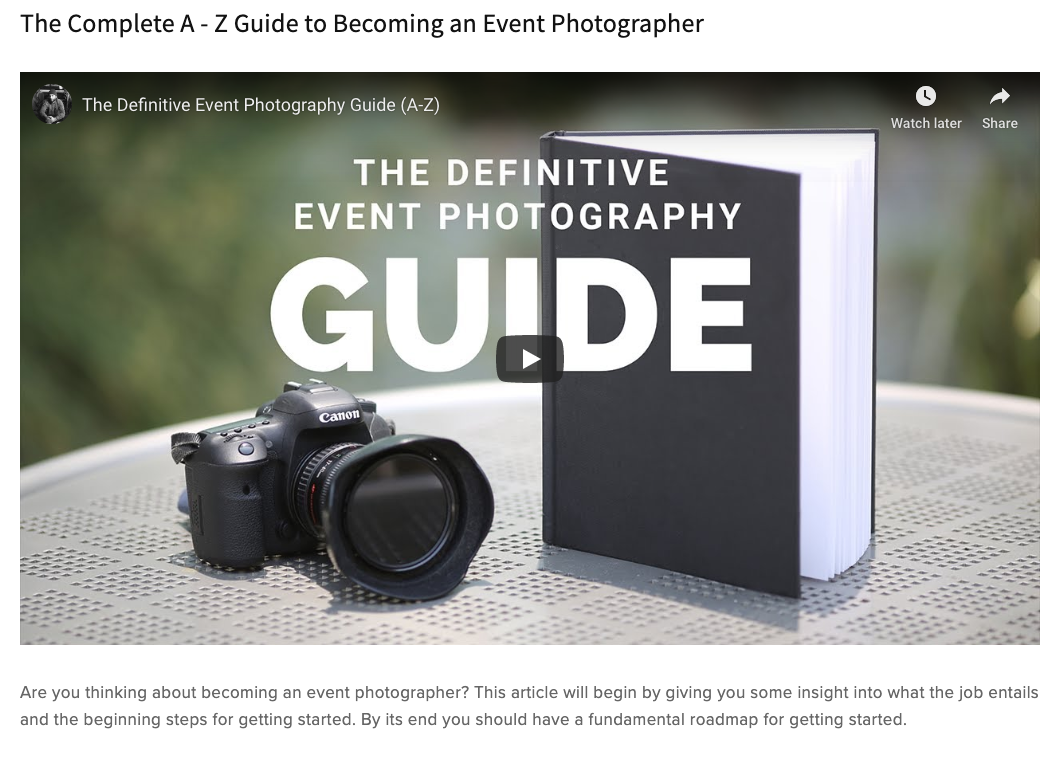Photograph Events in Your Life to Build a Portfolio.
This can be birthday parties, music festivals, concerts, corporate parties, private events, or pretty much anything you’re attending as a guest. You do not need to wait to be a working event photographer to practice your craft and build a portfolio. Many of your life activities can be considered an event. And if nothing else, shooting something as if it were one can be a great way to practice.
Personally, I love street photography as a way for me to work on something for myself, practice new techniques and methods, and yes: I’ve been shooting professionally for over 12 years now but I still add some personal work into my portfolio.
Volunteer Your Time to the Right Organization.
As a principle, you should avoid working for free for people that can and should pay for a professional photographer. Just because something is also good for you does not mean you should do it for free. But unfortunately there are people that are looking to take advantage of the fact that you can be manipulated into doing something free that you should be paid for.
Rather than work for free by someone that can and should pay you, my advice is for you to shoot for something like a non profit organization you believe in as it can be a great way to build your portfolio and support a good cause.
Learn From a Pro.
Start by assisting or second shooting for a seasoned professional. There are so many benefits to learning from someone rather than going it alone. Even if you are pretty familiar with the technical side of photography, you can learn go to settings, all about the gear you need, and other aspects of what its like to cover an event and run a business. By shadowing someone with experience, you can develop a template to follow or make your own when it comes to building your own business.
Leverage Your Connections.
Don’t be afraid to put it out there that you are building a portfolio or that you have already begun a professional photography business. Post your photos on social media sites like Facebook and Instagram. Post your website, your blog, anything you can to signal to people you know that you’re a photographer. If you’re lucky, you already happen to know event planners and such that you can network with- you just need to let them know that you’re shooting or plan on shooting professionally. Also, you don’t need to start with big corporate events. I didn’t. I started small. Most of my early work as an event photographer was shooting kids birthday parties. Odds are that you know plenty of people with kids that are having birthday parties.
Buy Lenses First.
Camera bodies depreciate in value and by the time you are able to get the most out of one, something better will be released. Lenses, however, hold their value and are much more responsible for the quality of your images than a camera body. Typically you will not need to upgrade your lenses, either. The lenses you buy will likely be a part of your kit for the length of your career as a professional photographer.
Buy the Lenses You Will Use Most First.
Don’t be tempted by niche lenses like a 135mm f2. If you check out my review on that lens, you’ll see I love it and make a lot of use of it, but it by far gets less use than my 24-70mm or 70-200mm lens. I think it’s really important you get all the lenses you need first. You want to both make sure that all your bases are covered and that you are making smart business decisions. Getting a lens with a lot of bang for the buck is a smart business decision.
Buy Fast Memory Cards.
Trust me, its worth it. Not only will a fast card help with shooting speed and recording in certain video modes, but it will also just make the process of uploading your work faster. Imagine shooting a 12 hour wedding day, coming home, and it taking 6 hours to upload all the files. Today, I would probably be ok with putting off my upload, but back then, shooting with a 5d classic which only had one memory card, I needed to make sure I had two copies of my files before getting some sleep. Even though that’s no longer an issue for me, it’s still important that I shoot on fast cards: my corporate clients tend to need very fast turnaround times. Some events I even offer live edits; fast memory cards are especially important for this.
Setting Rates
Start low and incrementally raise them until you see a drop off in how much work you’re getting.
Always Show Up to a Job Early
Not only will this give you peace of mind, but it will also give you time to photograph static detail shots so that you are able to focus on what's happening once the event starts. .
Always Dress Appropriately.
If you’re not sure how to dress, don’t be afraid to ask your client. You should always over dress over under dressing.
Smile to Get People to Smile Back
Most people can not resist smiling back when you smile at them. It’s human nature. If you want people to smile, simply give them a big smile and they will reciprocate!
Make Meaningful Images! Never Take a photo to Take a Photo. Shoot with Intention.
I go into great detail in the full version of these tips. But the short version of it is that you should always be striving to make images that are actually about something. Never raise the camera to your eye just to make an image. Know what it is you are trying to capture. Shoot with intention.
Mix Your Shots up to Tell a Story
Watch the whole video where I cover shot types. Here they are:
Establishing shots
Detail Shots:
Close Candids
Candid Interactions
Posed
Under Promise / Over Deliver
Give realistic turn around times but always give yourself a buffer. If you think the edit will take 3 days, tell them it will take a week.
Cull Your Images.
Meticulously edit down your work. Do not put the burden of this on your client. You want to make it as easy as possible for them to find your best work, especially when your images will be used for social media or marketing.
Rate Your Photos!
Use my 5 star system or make up your own, but rate your photos now rather than later. You do not want to go through the laborious task of doing this a year from now when you decide to update your portfolio.
Maintain Your Clients
Be sure to stay in touch with your client after the job and develop a relationship. One way to do this is by using a mailing service like mail chimp.

